How to be looser?
I get asked this question frequently and so today in the weekly livestream associated with my Watercolour On Location course we had a fascinating discussion about it. Whilst not everyone wants to work loosely, it does seem that a lot of people are striving after it!
In particular I asked the group two questions:
- Can you define what you mean by looseness? Is it associated with speed, or quality of line or strokes? Or something else?
- Why do you want your work to be looser?
I also shared a number of sketches of mine from 10 years ago – including this one sketched on location in Rome.
Looseness and my work
Working loosely is second nature to me and a lot of this has to do with my background of architectural design sketching. Even when I try to slow down and be neat, the looseness of my lines and brushstrokes just appears.
This is an really old example where I tried to do a sketch in the style of Matthew Rice.
I have a clear idea of what I mean by looseness but I have been wondering if it’s the same for everyone. So it was wonderful to read a variety of different responses in the livestream today and to realise that the term does indeed mean different things for different people.

For example are these direct watercolour sketches ‘loose’? (Note. Left sketch done on location, right sketch done from a photo.)
I also have a very clear ‘why’ and this is related to my goal to be constantly achieving a state of flow in my work. I’m always improving my skills so that I can better capture the essence of a scene in an almost effortless way.
I love the energy and freshness of a sketch and how interpretative it is. It fits in with my desire to use my sketches primarily to document my life, not to create masterpieces to hang on a wall.
But I know that everyone has a slightly different reason why they create art. See here for some amazing comments on this topic.
Looseness and Observation
Regardless of your definition of looseness it’s always important to remember that good observation skills are needed. I firmly believe that ‘good looseness’ should be grounded in good observation, so it’s something that will only come over time when a certain degree of confidence is reached.
If you are a beginner I recommend that you focus on building these core skills and not worry about achieving looseness initially. It comes, but it takes time.
What about you?
Anyway, there is a lot more on this topic which I could share… but today I would really love to hear your thoughts on these two questions about looseness listed above. I truly believe that getting a clearer idea of the what and the why will help you answer the initial question: How can I make my sketches looser?
Thanks in advance!

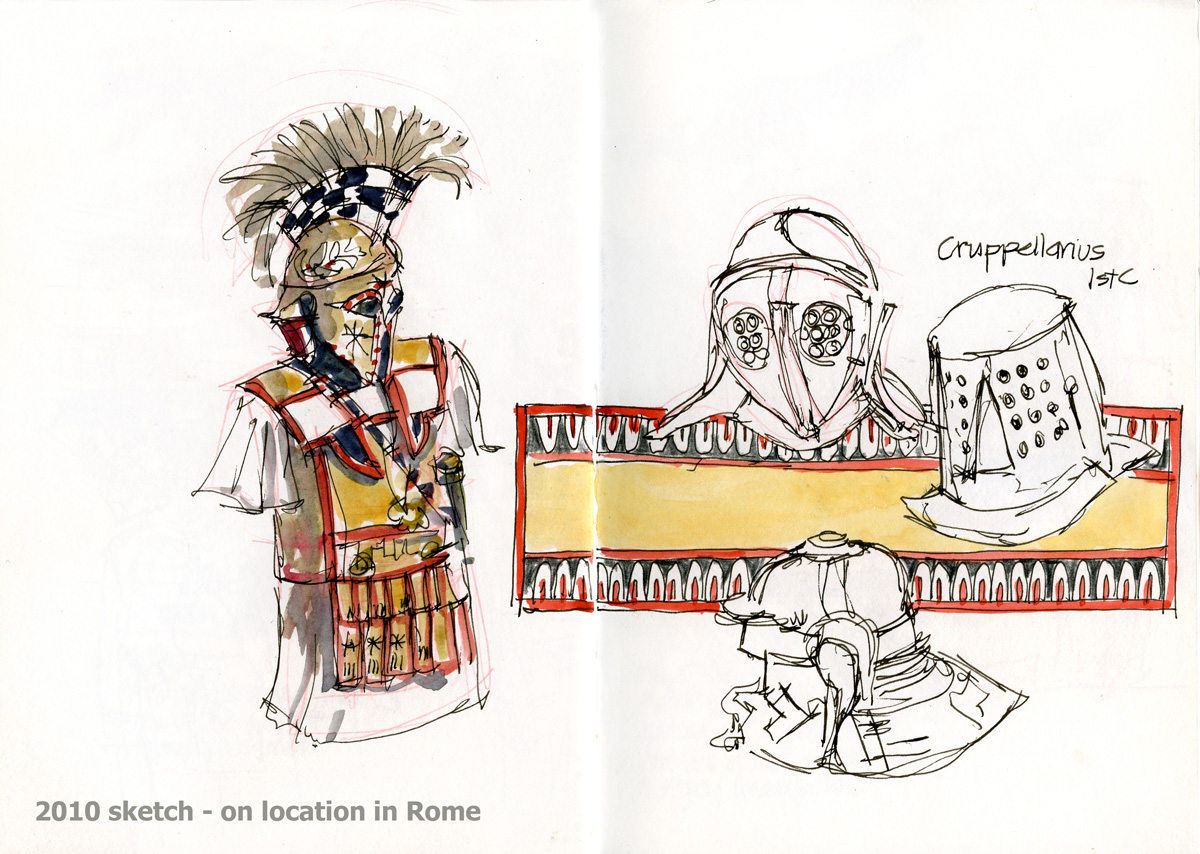
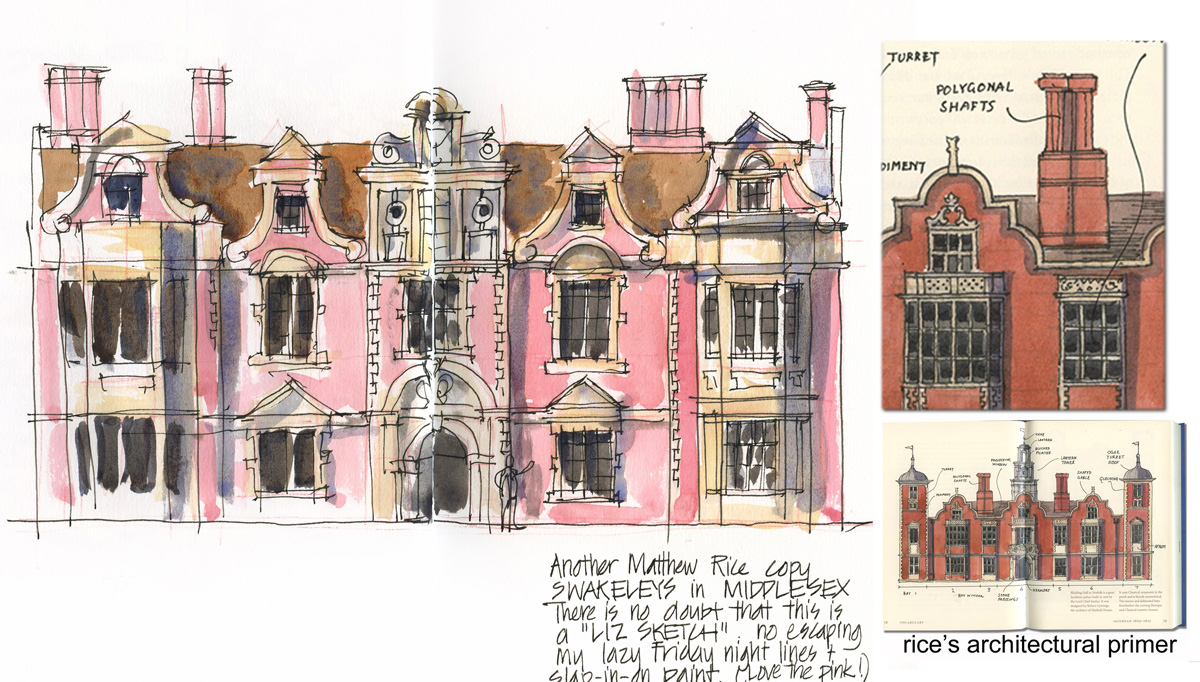



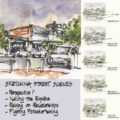
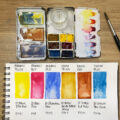
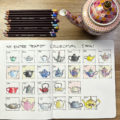
18 Comments
I’m in my 70s..have alot of achievements in art..textile art so now I focus on sketches w/a brush..loose. Also I’m focusing on doing this in sketchbooks..documenting my life each day if possible..this is “legacy” in a book..on that note I think a sketchbook makes more sense to leave my family/friends..no hanging..just the ability to wander through a book.
Brenda Staresnick
San Marco’s TX USA
Thanks for sharing Brenda!
I’m new to sketching on location, but I recently started to notice what happens to me when I’m out drawing. I begin to focus on the subject I’ve chosen and decide on the story I want to tell. Then I determine how it will be set up to tell that story. Thumbnails help me to do this. Then the drawing begins quickly because I only have a bit of time to capture the light. I try to simplify the shapes and leave out things that will block the movement of the eye and keep things that will guide the eye to the story. I start with the middle color, usually, and choose areas to leave white and areas that will be darker. It seems that there are many things going on in my mind at one time. I’m still working on getting the effects that I want with watercolor, but sometimes after sketching, I look at it and am surprised! There’s an exhileration and energy that happens while I’m focused. Maybe that’s what looseness is to me! I plan to continue these sketches and will revisit my reason for wanting “looseness”. It might become redifined and refined in my future. Thank you for your guidance, Liz. I’m learning so much from your “Sketching on Locations course, reviews, and livestreams.
Hi Maria – thanks for sharing and I’m so glad you are enjoying WOL! And yes! I know that feeling of surprise and that exhileration and energy which comes from sketching on location. Keep it up!!!
I think of looseness as the appearance of not having made much effort, but that’s because all the effort has come in the years of work that preceded it. I truly believe that you grow into looseness — it’s not something you can force yourself to try to have or deliberately learn. One of the biggest compliments I have ever received was “You make it look easy!”, although it wasn’t easy for me at all. I would love for all my sketches to look as if I made no effort at all, even if I did.
Related to this, I think some beginners mistake “looseness” for “sloppiness.” They see another artist with years of experience who has built up to the appearance of ease (and therefore looseness), so the beginner tries to emulate that — but it just ends up looking sloppy, and they wonder why. It’s because they haven’t yet learned the basic observational skills first, as you mention. The appearance of looseness is always built on a foundation of solid skills, even if you have to be “tight” first to learn those skills.
Hi Tina – yes totally… the appearance of effortlessness… but of course its not. And totally agree that looseness is not sloppiness or carelessness.
Looseness for me is not necessarily to sketch quick but to be able to focus on the big shapes and just point to the details (for example not loosing time with every single brick, but the viewer still knows there is a brick wall)
Yes totally Nadja – I agree!
I think of looseness, for me, of being more about shapes than lines, maybe the shapes can be loose, and the line work minimal and flowing, but more accurate. The colours can be a loose interpretation, but the values need to be more accurate. I think of my work as being quite loose because I get bored with details and spending too long on a sketch. Maybe I’m confusing looseness with being painterly. Is looseness related to abstraction, I don’t know, I’m waffling now. I’d like my work to be more abstract anyway. That’s what I’m working towards with my research in lesson 3 of Watercolour on Location, and I’m loving it.
Hi Sandra – thanks for sharing. I love your thoughts. While lines can be loose too, I do agree that looseness seems to be more shape based. As for painterly… what is the definition of that 🙂
As an observer I would say that looseness feels like spontaneous and full of personality. As a beginner sketcher, I find that my contour lines usually ” lock ” the image. In that sense, I guess that it is more related to quality and balance of line, strokes and color . I would like to draw/paint ” loose” , because if feels more free, more expressive, more personal.
Hi Dulce – yes full of personality, more expressive. That comes with practice and experience. Keep sketching and it will come!
I’ve been pondering this question lately Liz, particularly because of WOL. Just found this on The Tate website –
ART TERM
PAINTERLY
Painterly refers to the application of paint in a ‘loose’ or less than controlled manner, resulting in the appearance of visible brushstrokes within the finished painting
I thought the reference to visible brushstrokes is very interesting. We know how you love your hard edges and “bad marks”! To see the character of the medium and the energy it is laid down with must therefore be painterly. I don’t think it’s necessarily about speed though, because often loose artists spend a lot of time thinking about each stroke first.
Other websites talk about it referring to shape based work, of a more abstract and emotional response, rather than linear and representational. Painterly seems very much to convey a sense of feeling of atmosphere, rather than photographic realism.
Very interesting…
Thanks Sandra – very interesting indeed!!!!
Thanks Sandra – very interesting indeed!!!!
Hmmm … I think for me looser suggests a certain freedom, peace, and ease with my work, and in my body and mind. The ability to get the feel of an object or scene. Not sure that makes sense … in my head it does, lol, but translating it into words may take some more thinking on my part.
Also, as I think of my Kindergarten artists (I teach) I see them sometimes as being very loose — and it definitely has to do with a sense of just being in the moment, not fretting, seeing, experiencing, doing. They can’t always do it, but often they do it far better than I do!
I love your loose style of sketching Liz!! And would love to emulate it – if only I could draw… and spontaneously at that!!
To me ‘looseness’ means just that – being spontaneous, not overworking a painting or sketch or worrying about it’s accuracy – embracing the ‘wonkyness’; Making it all look so easy & effortless – which ironically is probably much harder to do in reality!! Having some kind of naïveté about the painting & saying more with less strokes! Evoking an emotion rather than seeing an exact copy or representation of something & thus let’s the viewer complete the image in their mind – for example where you have your ‘lost edges’… being able to capture the essence of something with minimal detail.
When I have a chance I would definitely love to take a few of your courses… then hopefully some of your ‘Liz-ism loose style’ will rub off onto me! Lol!
Thanks for sharing Fabienne! Would love to see you in a SketchingNow course one day!
NEWSLETTER
Subscribe for first notification of workshop + online classes and more.